Matador Network's Blog, page 2166
December 31, 2014
15 lesser-known ruins of the world
You’ve heard of Machu Picchu and Stonehenge. You’ve seen pictures of them your entire life. If you ever made it to Easter Island, you’d see the famous Moai, and you’d say, “Yeah, that’s basically what they looked like in the pictures.” But the world has more ruins than just the popular tourist attractions. The world is littered with scraps of its own history, and some of the lesser-known scraps are still truly spectacular.
They’re found in Central American jungles, Middle Eastern deserts, European cityscapes, Southeast Asian volcanic valleys, and on North American mesas. Here are some of the most impressive ruins that you’ve (probably) never heard of before.
An earlier version of this article was originally posted on September 17, 2009.
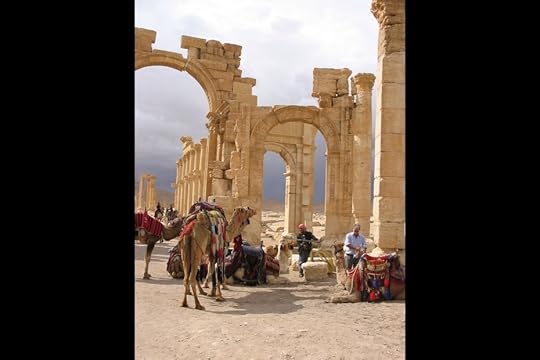
1
Palmyra, Syria
This ancient desert oasis of a metropolis, 200km from Damascus, is at least 4,000 years old and can still be visited by camel caravan. Photo: captain.orange
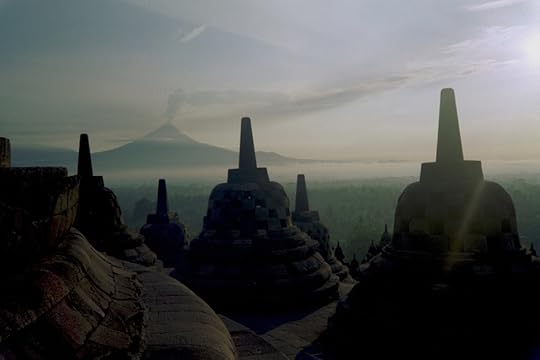
2
Borobudur, Indonesia
Borobudur was an active Buddhist temple from the 9th to 14th centuries and is located rather precariously between two Javanese volcanoes. Photo: ctsnow

3
Teotihuacan, Mexico
Sitting less than an hour outside Mexico City, this pre-Aztec pyramid city may have been the most populous in the world during its heyday between A.D. 150 and 450. Photo: Juls Barrett

4
Cappadocia, Turkey
The unique stone formations of this region in central Turkey were made even more picturesque when homes and monasteries (and today hotels) were carved into them beginning around A.D. 300. Photo: Nir Nussbaum
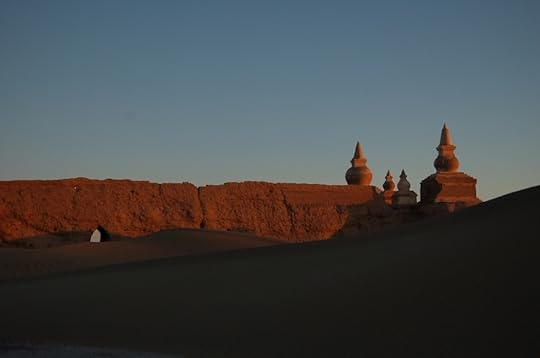
5
Khara-Khoto, Inner Mongolia
Marco Polo is said to have passed through this Mongol trading outpost before it was sacked by a Ming Dynasty army. Since then, the Gobi has slowly been taking up residence. Photo: Ed_Stannard

6
Wat Phu, Laos
The lazy riverside town of Champasak is the gateway to these Khmer temple ruins, granted Unesco World Heritage status in 2001. Photo: Adam Jones, Ph.D.

7
Tikal, Guatemala
Though only questionably qualifying as "lesser-known," this stop on the Maya Trail did lose out on becoming a "New 7 Wonder of the World" to its cousin farther north, Chichen Itza. Photo: mtsrs
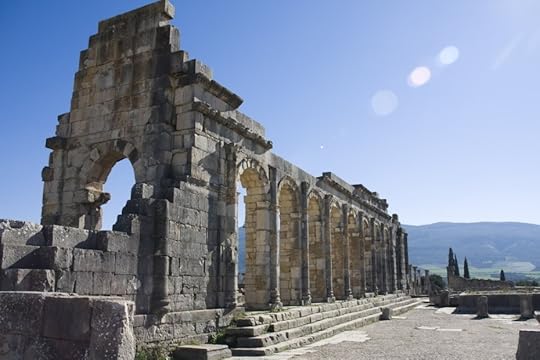
8
Volubilis, Morocco
The Romans sure got around, leaving behind their characteristic triumphal arches and columned temples in unlikely places -- such as a few dozen kilometers outside of Meknes, Morocco. Photo: ollografik

9
Bagan, Myanmar
This ancient Burmese capital and its 2,217 peaked-dome temples should be better known, but its location within a "rogue state" is holding it back. Photo: jmhullot

10
Tiwanaku, Bolivia
Tiwanaku (or Tiahuanaco) is still being excavated, as funds become available, but has already revealed countless secrets about a pre-Inca empire that ruled the Altiplano until A.D. 1000. Photo: victorsounds
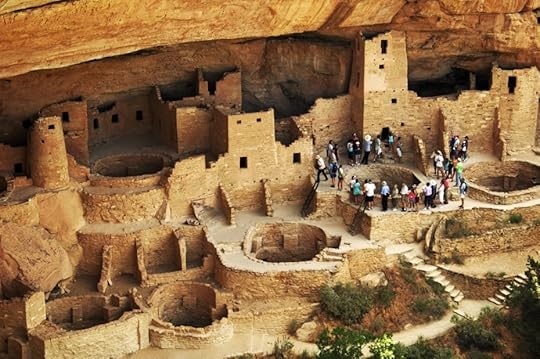
11
Mesa Verde National Park, USA
The Anasazi's cliff-carved city, built in the 11th century, is considered the largest in North America and is the centerpiece of this national park in the Four Corners region. Photo: ..lauren..
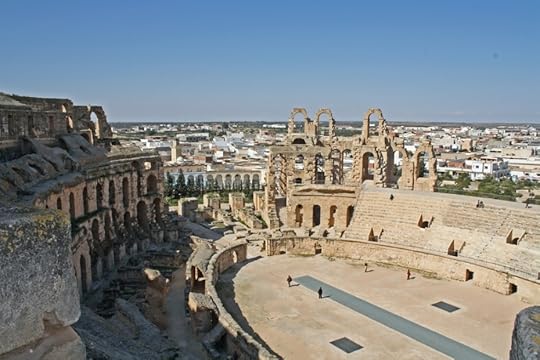
12
El Djem, Tunisia
More evidence of the Roman presence in North Africa comes in the form of this ruined amphitheater -- the ancient empire's third largest. Photo: skuds

13
Guachimontones, Mexico
The Guachimontones archaeological site was the "place of the Gods" for the Teuchitlan people, who existed before Westerners ever made it to the New World. It is in the Mexican state of Jalisco. Photo by Esteban Tucci
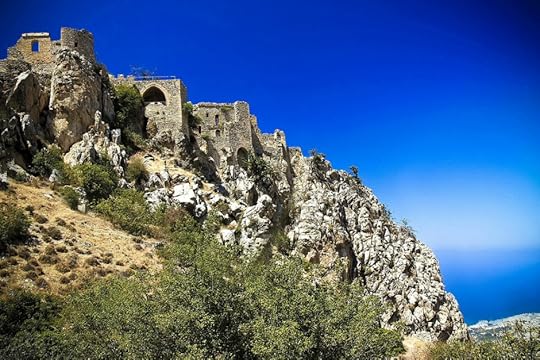
14
Saint Hilarion Castle, Cyprus
Originally just a monastery, Saint Hilarion was built 1000 years ago by monks. It was eventually converted into a fort by the Byzantines, who used it to fight raiding pirates. Photo by bassnroll

15
Ganghwa Island Dolmen, South Korea
Dolmen are "portal tombs" dating from back in the Neolithic era. They can be found throughout Asia, Africa, and Europe, but their highest concentration is on the Korean Peninsula. Photo by Jeong Woo Nam
10 signs you're from Costa Rica

Photo: Fotos GOVBA
1. You had your first coffee before you were 5 years old.
Your mom would mix it with extra milk so it wouldn’t taste so strong. She’s the reason you developed an addiction to it and now drink at least 3 cups a day.
2. You don’t refer to someone as a person, you say “mae.”
‘Mae’ is everyone and anyone, feminine or masculine (esa mae or ese mae). When talking to your friends, it’s not uncommon to hear the word mae at least 50 times in one conversation.
3. You include partying in your monthly budget.
It doesn’t matter if there’s nothing going on, you will find a reason to celebrate. You double your party budget if La Sele (the national soccer team) is playing that month.
4. You don’t say 1000 colones, you say “un rojo.”
In Costa Rica the 1000 colon bill is red (rojo in Spanish), so you denominate money as un rojo, dos rojos, diez rojos, and so on. For example, you say “I paid diez rojos for that ticket.” One million is “un melón,” just because it rhymes.
5. You use trees and house colors to give directions.
From the mango tree, turn left and keep going 2 apples (blocks), it’s the third house on the right, watermelon color with a palm tree in the front. Street names — who needs them?
6. You know about Tico time.
If someone says: “I’ll meet you at 4,” you know it probably means the person might be leaving the house at that time. Not proud of this one, but us Ticos are not exactly known for being punctual.
7. You say pura vida for everything.
Used a hundred times a day to say hi, goodbye, thank you, you’re welcome, to express well-being, or to say something is good or nice, pura vida (pure life) is your mantra.
8. You eat tamales for breakfast, lunch, and dinner on Christmas and New Year’s Eve.
Your mom makes a huge batch of traditional tamales for the holidays and you are responsible for eating half of them.
9. You honed your salsa dancing and merengue skills in family reunions.
Your aunt, uncle, mom, or cousin made you dance with them at all family gatherings. You might have hated it back then, but at least now you can dance.
10. You secretly speak pachuco (street slang).
Even though you might not use it often, you can speak it fluently. You know that tuaniz means good, that mopri (a mix of the letters of primo) means mae, that the police are los pacos, your car is un nave watched over by el guachi, and your job is el yugo. En ‘toas…it’s good, mae! 
7 things freelancers are sick of hearing

Photo: CollegeDegrees360
1. “So do you like, watch Netflix all day?”
No. I work. A lot. I probably work more than I did in an office job, because A) I’m doing something I actually enjoy and B) I don’t suffer from the general exhaustion that comes with waking up at 6am, working from 9am-5pm, and getting home after dinnertime. I can use all of those hours people waste on getting ready and commuting to produce my work.
That’s not to say I don’t take breaks or do weird stuff during the day. I like that I can do my laundry at 11am when no one else is around, or go to the gym at off-hours. I also happen to work better between the hours of 3pm and 9pm, so being able to set my own hours is super key in maintaining productivity.
2. “I could never work from home.”
This statement is usually meant to be benign, but for some reason it often comes off as pretentious; it makes me feel like my ability to be self-disciplined and focused is bullshit. I think I’d feel better if it was followed by something like, “I give you mad props for doing it!” or, “How can I get over that hump?”
The good news is that if someone put a gun to your head and said, “YOU HAVE TO BECOME A FREELANCER!” you wouldn’t have to worry about setting up an office at home. You could work in a café. You could work at a co-working space. You could work at the beach, if that’s where you work the hardest / best / easiest. I prefer my home office because it’s already there, but lots of my co-workers “clock-in” from different venues. It depends on the person, and their level of fighting off distraction. Some people need the rigidity of regulated hours and a dedicated workspace.
3. “Do you ever put on pants?”
Yes. Mostly. There are definitely days where I roll out of bed and get to work, simply because there isn’t enough time in the day to get everything done. But I do try and dress like a normal human. I might not wear a suit, but I change my underwear every day and wear what’s comfortable.
4. “Wait, your boss doesn’t give you time off for Columbus Day?”
Why should he? If I need a day off, I just ask for it. As long as I can get my work done, or have it covered by someone else, I don’t need to worry about vacation time. I actually feel weird when a day goes by and I don’t contribute to my job somehow. Even on personal trips I’ll take an hour or so a day to check-in and make sure everything is running smoothly.
When you really enjoy what you’re doing, and your work environment is stable, you don’t mind doing it, no matter where you are.
5. “Are you super poor?”
Actually, I make more money working from home than I ever did working a 9-5 job in New York City. I am in control of my salary, therefore I better bust my ass in order to maintain my lifestyle. Plus, I’m able to save on stuff like transportation, lunch, and wardrobe costs, and I can write off things like my internet bill, my train tickets to work-related events, even a portion of my laptop since I use it for work.
Assuming that freelancers are unfortunate creatures who can’t deal with a “normal” job is patronizing. My freelancer friends are some of the hardest-working people I know because they understand the worth of being a self-starter. They are also very business-savvy; some are able to pay their entire month’s rent from a single 1,000-word article. That’s fucking powerful.
6. “You must be really lonely.”
It depends on the person, I think. I for one am happy to be rid of distracting, moronic coworkers who wasted so much of my time asking which singer on American Idol I thought was the best. I work a lot better when there aren’t other people around me, breathing down my neck, or piling more work on my desk.
I get to interact with my coworkers enough via Skype and Gchat, but I do miss the clear inter-office communication that comes with working a desk job. I can’t grab an after-work beer with my senior editor, and I’m lucky if I get to meet up in-person with the people on my team once a year. You have to be okay with being alone a lot, which not everyone is. But just because we work alone, doesn’t mean we’re lonely.
7. “Don’t you want a REAL job?”
Aside from sounding super condescending, you’re also just an idiot in general, because I’ve clearly explained fully what I do, how I work with others, and how I make money. But I suppose none of that constitutes what a “real” job entails. So you’re right, I’ll go scouring the papers for something that’s half as fulfilling and flexible. Is your company hiring? 
December 30, 2014
What bartenders think of your beer

Image: belpo
NOWADAYS you can throw a stein and hit a craft brewery, or a yeast geek quibbling about clarity and ABV levels. Hops — originally added to beer by monks as a boner deterrent — have today become the weapon of choice in a bro battle of bitterness. In honor of the changing face of the American beer drinker, I’ve compiled a list of commonly-ordered beers and the habits of the people who drink them.
AMERICAN PALE ALE: Intrinsically likable, average but dependable, you are the Tom Hanks of beer drinkers. You have never pissed on the side of a building or a stranger. You have a solid handshake and wear sensible shoes.
STOUTS: You are gregarious and demanding. You appreciate the theatrics of a 5-minute pour. You own a cape and talk about head, a lot.
LAGER: You are a staunch traditionalist. If you are not old you are at the very least old school. You balk at authority and the pale, flaccid hands of office workers. You have been in a bar fight.
CIDER: You have never been in a bar fight.
WHEAT: You are living in the year of our lord 1998. You listen to the Gin Blossoms, on cassette tape. You favor laissez faire parenting and vote independent.
IPA: You are loud and fetishistic. You are undeterred by scientific evidence that suggests excessive hops drinking gives you bitch-tits and impotence. Your favorite game is one-upmanship.
PILSNER: You have a precise nature and believe punctuality to be a virtue. You wince at a sloppy pour and masturbate to the Container Store catalog. You floss until you draw blood.

More like this: What bartenders actually think of your drink order
BROWN ALE: You are a middle child fond of understated quality and balanced malts. You smell of wool blankets and reclaimed barn wood.
IMPERIAL anything: You are an elitist and enjoy the sharp yet satisfying taste of your enemy’s tears .
GLUTEN FREE beer: Fuck your life.
LAMBICS: You thrive on obscure cultural references and sexual ambiguity. You are the only person who has ever heard of your favorite band. 
December 28, 2014
Year review will give you chills
VIRTUALLY EVERYONE WITH AN INTERNET CONNECTION spends at least some time on Google each year: to settle arguments, to research school projects, to confirm a rumor on Twitter, to find a news story, to kill time while sitting on a bus, and so on. Google holds on to all of these searches and then, at the end of the year, tells the world what they were searching for most.
The results tell us far more about ourselves as a human race than we might expect. We searched more for “hope” than we did for “fear,” we had an intense desire to inform ourselves about the Ebola epidemic, and we were pretty much universally blown away by James Rodriguez’s goal against Uruguay in the World Cup.
Give the video a watch and be blown away by what our world accomplished — and survived — this past year. 
Locals vs tourists in Paris

Photo: Janssem Cardoso
1. Tourists think the accordion players in the metro are cute and quintessentially European; locals sigh and change metro cars.
2. Tourists queue for macarons from La Durée, locals queue at one of the new Burger Kings. If you thought Parisians were into “MacDo,” then you’ve never heard them talk about “BK.”
3. Tourists in Paris wear hiking shoes and backpacks as if they were going to trek through the rainforest in Thailand, while locals wear only black and stride around expertly in heels and/or pointy-toed shoes.
4. Tourists flock to St. Michel for lunch and dinner; locals go to Picard to pick up some frozen gourmet.
5. Tourists eat fries with ketchup; locals eat fries with mayonnaise.
6. Guess who is wearing the beret and the striped shirt? Yes, that’s a tourist with the jauntily tied scarf, too.
7. Tourists think that they can get to Nice for a day trip. Parisians know that they’ll need to take one of their (numerous) days off of work and turn it into a four-or-five-day weekend.
8. Tourists don’t know the numbers of the arrondissements while locals have trouble leaving theirs.
9. Tourists hang out by the Seine while Parisians hang out by the Canal St. Martin.
10. Tourists wish they could use Velib‘ and bike around like they see Parisians doing, but most can’t because the machines don’t accept swipe cards.
11. Tourists show up for dinner at like 6pm while locals are still at work.
12. Tourists wear wedding dresses and tuxedos to pose for pictures in front of the Eiffel Tower or the Arc de Triomphe. A lot of locals don’t even get married; they just end up being PACS-ed and, if they do have a ceremony, it is usually outside Paris.
13. Tourists buy locks to put on the Pont des Arts. Locals know that the locks are a safety hazard and that the city cuts off this symbol of eternal love regularly.
14. Tourists stand in large crowds and stop in the middle of the sidewalk or block metro entrances. Parisians push them out of the way or strategically — yet nonchalantly — hit them in the face with oversized black leather bags.
15. Tourists wear shirts that say ‘I heart Paris.’ Parisians have bumper stickers that say ‘I heart nothing, I’m Parisian.’
16. Tourists come out of grocery stores with plastic bags and shops with paper bags, while every Parisian has multiple cloth bags from Monoprix.
17. Tourists want to go to Disneyland Paris, while a lot of locals venture out to Parc Asterix.
18. Tourists would laugh at you if you said you were going to see the Statue of Liberty in Paris (“Wrong city!”) while locals know that there is indeed a mini Statue of Liberty in Paris.
19. Tourists may mistakenly call the Seine “the river.” Parisians don’t even think of the Seine as a river (and genuinely don’t know what you are talking about if you say “the river.”)
20. Tourists stroll around St. Germain de Près and Île St. Louis, while Parisians soak up the sun on a blanket in Buttes Chaumont.
21. Tourists only want to drink wine in Paris. Parisians love wine, but they also know how to enjoy a good mojito or beer.
22. Tourists sit inside at pretty restaurants while Parisians huddle around tables at outdoor cafés (still managing to look glamorous) in the dead of winter.
23. Tourists want to eat “real” French food at restaurants in Paris. Parisians are basically obsessed with sushi.
24. Tourists are in Paris in August. Parisians are everywhere but Paris in August. 
Exploring Morroco's Pink City
MATADOR contributor Paul Sullivan has written and photographed two editions of the Hedonist’s Guide to Marrakech (Filmer). Here, he leads us through the medina and souks of the fabled Pink City, then into the nearby Atlas Mountains, over to the Atlantic coast, and finally to the edge of the Sahara. 
This article was originally published on October 16th, 2009
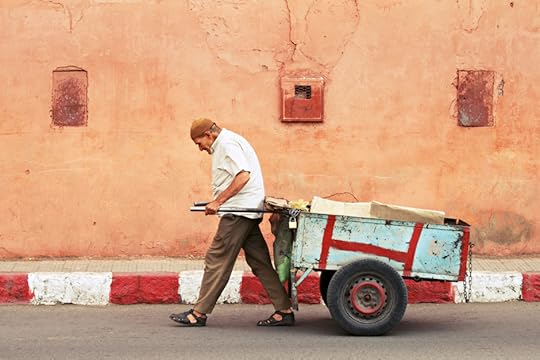
1
The Medina of Marrakech
Marrakech is one of Morocco's oldest and most alluring cities. Despite the constant influx of tourists, the city has maintained an exotic Old World atmosphere - particularly within the ancient Medina, where map-toting tourists attempt to navigate the labyrinthine streets and locals go about their daily business as they've been doing for centuries. Image by Datmater.

2
Artisans
Traditional artisan skills such as weaving, metalwork, pottery, bread baking, and carpentry are all very much alive in Marrakech. In fact the Medina has its own "artisan quarter" where you can watch these craftsmen at work. Image by tuXnOwaR.

3
Traditions
A large part of Marrakech's exoticism are the abundance of old traditions and customs that are kept alive. Here a vendor sells groceries direct from his bicycle. Image by Aitor Garcia Viñas.
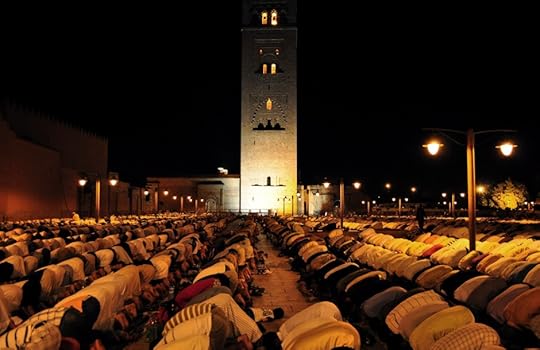
4
Prayers
Morocco is a Muslim country. Several times a day the familiar sound of the muezzin (call to prayer) sails through the air and devotees swarm to the many mosques (sitting outside if they're full), or simply kneel and bow their heads towards Mecca wherever they happen to be. Image by David Graus.
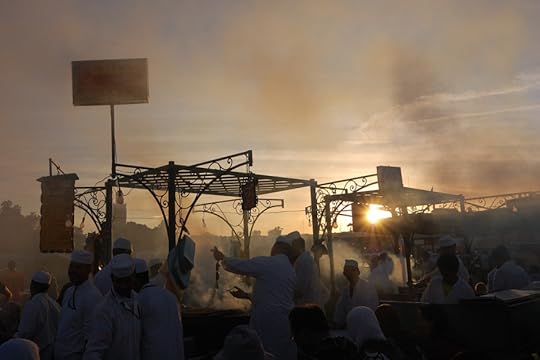
5
Djemaa El Fna
During the day, Marrakech's main square, the Djemaa El Fna, is a busy and fairly modern hub for shoppers, traders, and tourist touts (snake charmers, water bearers, acrobatic dancers). Come nighttime the place transforms into the largest open-air barbecue in the world, as the air fills with smoke and locals and visitors sit next to each other to chow down on everything from harira soup to seafood. Image by Rosino.
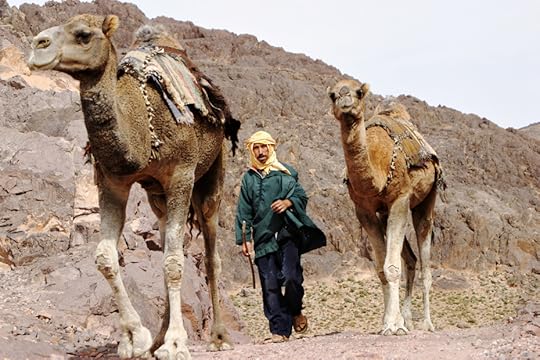
6
Escaping the city
Sometimes the heat and hassle of the Pink City can get too much. Fortunately, there are a number of easy and accessible escape routes. One of the most popular trips is up to the Atlas Mountains, just an hour or two's drive from Marrakech. The cool peaks provide beautiful respite from the chaos of the medina, and are full of Berber villages and superb walking routes.
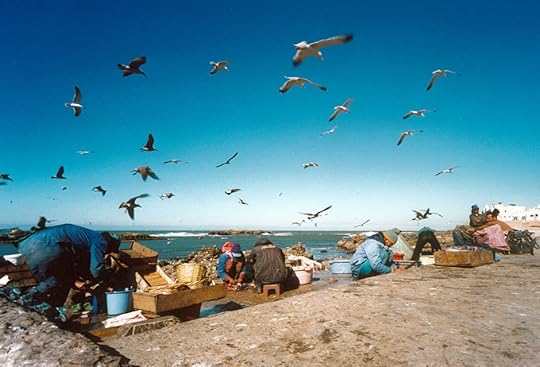
7
Essaouira
Another possible day trip from the city is to Essaouira, a small, charming fishing town on the coast. It has good tourist infrastructure, and its distinctive white and blue medina is today a UNESCO heritage site. The seafood here, as you'd expect, is especially tasty. Image by Tiberio Frascari.

8
The Berbers
We also came across these Berber children, who were happy to receive our gifts of jewellery and biscuits in exchange for a photograph. They didn't pause too long given the encroaching rainstorm.
The red pill: 15 films guaranteed to blow your mind
MY ENGLISH TEACHER once told me that good short stories were the ones that spoke to universal truths.
These were the stories that go beyond mere characters and their antics through an imaginary universe. They offer an insight into the human condition: what is life? what is truth? what is reality?
The same could be said for memorable films. Only films convey their meaning in a more sensory way – using both audio and visual elements to enter the mind of the viewer. And perhaps even shift your perspective.
The following 10 films are chosen because they shed light on the forces at work within our lives, this very moment. They use satire and metaphor to approach the truths that would otherwise be too difficult to understand, or too terrifying to comprehend.
Most of all, these films challenge you to wake up.
The Truman Show (1998)
Jim Carrey plays Truman Burbank, the first child ever legally adopted by a corporation. His entire life is constructed inside a gigantic set, encompassing the picturesque town of SeaHaven. Everything is artificial — from the buildings, to the people, to the very sun above his head.
It’s too easy to call the film a satirical extension of “reality television.” Instead, Peter Weir deftly uses the motif of reality TV to present the “un-realities” of our own world. How the majority of us are psychologically controlled, through fear and comfort to, as Cristof says, “accept the reality of the world that we’re given.”
Read more: The Meaning Of The Truman Show
I Heart Huckabees (2004)
Imagine you were experiencing an existential crisis. But rather than work through it yourself, you hire existential detectives to help you track down the source of your suffering. Imagine one of those detectives is Dustin Hoffman with a bad haircut.
I Heart Huckabees is a quirky, rabbit hole of a film. Many of the characters, from the smarmy marketing executive (Jude Law), to the angry nihlistic firefighter (Mark Walberg) act out the various philosophies of the past thousand years.
Read more: Essay on I Heart Huckabees
Waking Life (2001)
What if you were chained in a dimly-lit cave your whole life where you saw only shadows of real things reflected on its back wall?
Suddenly you’re free and come into the sunlight. Would you recognize this new world as more real than your cave world? Would you be able to wake up?
Talk about a mind trip. Richard Linklater’s film Waking Life, is both visually beautiful and intellectually stimulating. The filmmakers use a ground-breaking technique (at the time) called ‘rotoscoping’ to colour over the images to create a dream-like animation.
Just a few of the ideas covered in unbroken dialogues: dreaming versus reality, existentialism, buddhism, situationism, post-modernism, the list goes on.
Read more: Essay on Waking Life
The Matrix (1999)
For obvious reasons, this was a paradigm-shifting film in the world of movies. But it also introduced a whole generation (myself included) to question the nature of reality. What is real? And how do you know it’s real?
The film’s other great contribution to mass society was the possibility that an unseen force is controlling our destiny. Morpheus reveals the ultimate truth that Neo’s mind can barely process: the Matrix is control. And the only way to break free? Open your mind.
Read more: Collection of essays on The Matrix
Dark City (1998)
Do you ever feel like you’re playing a role? Released 1 year before The Matrix, another film introduced the concept of a hidden beings controlling the destiny of humanity.
Dark City follows Rufus Sewell, a man framed for murder, as he’s pursued by faceless super beings that can manipulate time. Unfortunately for the beings, the protagonist is unwittingly gifted with their own powers of psychokinesis, and a challenge for domination ensues.
Read more: Dark City on Wikipedia
American Beauty (1999)
Horny suburban dad obsesses over his daughter’s friend, a vapid cheerleader. But there’s much more to this dark tale of the American dream gone awry.
Notable elements of this award-winning film include the dehumanizing effects of consumerism, the repressed sexuality of a gay military man, and the pot smoking defiance of Ricky Fitts, who sees the beauty of the entire universe in a single, swaying plastic bag.
Read more: American Beauty and the Idea Of Freedom
Fight Club (1999)
“Advertising has us chasing cars and clothes, working jobs we hate so we can buy shit we don’t need. We’re the middle children of history, man. No purpose or place. We have no Great War. No Great Depression. Our Great War’s a spiritual war… our Great Depression is our lives.”
Tyler Durden’s words ring true in this dark, angry look at young people’s failures to interact with the value system they’re expected to uphold. Far from being a manifesto for violence, the film is rumination on the lengths we will go to experience real emotion, even if it means (metaphorically) bashing someone’s head in.
Read more Fight Club: A Ritual Cure For The Spiritual Ailment Of American Masculinity
Donnie Darko (2001)
Sometimes, to make something better, you’ve got to burn it all down and start over. Such is the relationship between Graham Greene’s The Destructors, and the cult classic Donnie Darko.
The film seamlessly weaves together notions of God, the non-linear nature of time, mind-control, and the freakiest bunny mask you’ve ever seen. It may take multiple viewings to discern a few messages from this multi-layered flick, but each time around will be just as rewarding.
Read more: Essay on Donnie Darko
Brazil (1985)
A dystopian, black comedy, Brazil reveals the terrifying indifference of bureaucracy in a totalitarian state. Although director Terry Gilliam claims never to have read 1984, the themes are too similar to dismiss.
Sam Lowry, a government cog in their machine, habitually escapes his dead-end job by imagining a fantasy world of romantic struggles.
Unfortunately, the system roots out dissidents with fervour. The villains in the film are neither malicious nor sadistic, they are merely doing their jobs.
Read more: Analysis of Brazil
Network (1976)
The news stopped being about enlightening the masses a long time ago.
Instead, news attempts to portray a world view that allows those in power to stay in power. This is never more true than 30 years after the film Network was released, when Howard Beale proclaimed “I’m mad as hell, and I’m not going to take it anymore!”
He called for viewers everywhere to stand up, and demand democratic control over their lives once again. The irony is even more biting when it’s revealed democracy, along with nations, peoples, and countries, no longer exists. The only thing left: the global system of finance.
Read more: The Rise of the Superclass
The Mindscape of Alan Moore (2003)
Even if you’ve never heard of him, you’re intimately familiar with comic book writer Alan Moore. He is the creator of the seminal comics Watchmen, From Hell, The League of Extraordinary Gentlemen, and V for Vendetta, whose main character has become the main symbol of the Occupy and Anonymous movements.
Moore as a person is somehow more fascinating than the staggeringly brilliant work he’s created: he’s an anarchist, a magician, and he looks like Hagrid’s evil doppelganger. In this low-budget documentary, Moore explains how language is actually a form of magic, how our culture is changing so fast that it may be “turning to steam,” and how the imaginary world is, in a sense, just as real as the real world. Sound hokey? It won’t. Give it a watch. And read all of his books.
Watch The Mindscape of Alan Moore for free on Hulu.
Eternal Sunshine of the Spotless Mind (2004)
Who would have thought Jim Carrey would have made this list twice? Charlie Kaufman and Michel Gondry’s masterpiece starts as a couple (Carrey and Kate Winslet) are breaking up. Hurting from the split, they both rashly decide to hire a cut-rate company that provides a service: it deletes all memories of the other from their mind.
Most of the movie takes place inside Carrey’s mind as the brain-erasers are pulling Winslet from his memories. As Carrey travels back through their relationship, he begins to have second thoughts about having the procedure.
Aside from being an incredibly good romance, the movie plays with the concept of memory in ways you’ve probably never thought of before, and will have you thinking: would you delete anything from your mind?
Read more: The Neuroscience of Eternal Sunshine of the Spotless Mind
Princess Mononoke (1997)
All of Hayao Miyazaki’s movies should be required viewing (check out Nausicaa of the Valley of the Wind, too), but Mononoke is best. The movie is about a cursed young man who gets involved in a war between industrialized villagers and the creatures and spirits of the forest.
While the movie has strong environmentalist undertones, it’s also notable in that Miyazaki refuses to make his polluting “villains” purely evil — he paints them as fully fleshed-out, complex human beings. It’s a movie that will last with you for a good long while.
Read More: The Best Environmental Epic: The Case for Princess Mononoke
Tree of Life (2011)
You may hate it. You may find it impossible to follow. But you will not finish this movie and be in the same state of mind when you started it.
Terrence Malick’s fantastically ambitious Tree of Life focuses on a small family in Texas back in the 50’s, but it also manages to look at the Big Bang, the creation of the solar system, and the dinosaurs. The film is staggeringly complex, floating its own ideas about the existence of God, and about man’s fundamental choice between pursuing the state of nature or the state of grace. It’s a movie that could change your life.
Read More: The Tree of Life: Need we choose between grace and nature?
Interstellar (2014)
Interstellar isn’t even in Christopher Nolan’s top five best movies (two of his better ones, Memento and Inception are similarly mind-blowing), but Nolan deserves credit for taking blockbuster money and doing something truly ambitious with it, and for refusing to show contempt for his audience’s intelligence.
Set a few decades in the future, Interstellar features a dying world. When a wormhole appears near Saturn, a pilot, Matthew McConaughey, agrees to take on the mission to discover a new habitable world for humankind. The movie isn’t perfect, plot wise, but its science is better than that of most sci-fi films, and it takes a rare optimistic stance on humankind’s fate: should we resign ourselves to the apocalypse? Or should we transcend our world and travel into the stars?
Read more: Neil deGrasse Tyson seemed to enjoy Interstellar
What do you think of the films in the list? Share your thoughts in the comments!
A shorter version of this article was first published on May 27, 2008.
December 27, 2014
How hardcore of a traveler are you?
16 ways to spot a douchebag at the club

We’ve all encountered these self-entitled, self-loving douchebags. Here are the top ways in spotting the worst of the worst in a nightclub. These are our RED FLAG ALERTS!
1. He’s wearing sunglasses in the club. His future is probably not very bright, so the idea of wearing glasses in a club screams “HE’S A DOUCHEBAG!”. He’s either hiding that he’s wasted, rollin’ on molly or just an outright idiot.
2. He’s drinking straight from the bottle of champagne at the VIP table like he’s a frat boy.
3.He’s taking pictures with his friends or with girl throwing up the peace sign or pointing at the person he’s taking a picture with (or himself).
4. He’s a 30k millionaire and he’s trying to inflate his ego and act like he has money. He thinks it’s a good idea to cash in his hundred for 5 dollar bills and begins to make it rain and throw the money into the crowd.
5. He has a blown out haircut that also can be used as a weapon for stabbing when in roid rage fights.
6. He is wearing a tight, low-cut t-shirt to display his pecks and cleavage. This is the guy who thinks he’s prettier than you. The deeper the cleavage, the bigger the douche.

More like this What bartenders actually think of your drink order
7. His tan is brighter than the orange you ate for breakfast. Maybe he’s color blind?
8. He’s seen walking around the club trying to pick up every single girl. His objective is the law of averages: he figures he will finally score with someone as long as he macs on enough girls.
9. He has a YOLO tattoo or even worse, a sun tattoo around his navel.
10. He won’t stop talking about how much money he makes. He also pulls out his iPhone and proceeds to show you photos of his cars that were clearly ripped off the internet.
11. His shirt or jeans has any of the following attached to it: beads, sequins, rivets, pins, gems, rhinestones, studs, metallic paint, or crystals.
12. He’s wearing a shirt, tank-top or hat that says “I love sluts” or “I party with sluts.”
13. He’s wearing a wife beater/tank top in a nightclub.
14. He has patterns of any sort in his haircut or beard.
15. He’s wearing rosary beads or any other religious paraphernalia, yet has no religious affiliation, except for praying for forgiveness for bringing home a “grenade” last night.
16. His dance moves include fist-pumping and grinding women from behind.
So there you have it. Guys, we love you but we are tired of answering the phone from the past. 2005 called and they want their douchebags back. 
-S & L
Compiled by Lisa Millar-Jones and the crew at Caprice Nightclub and republished here with permission.
Matador Network's Blog
- Matador Network's profile
- 6 followers



















